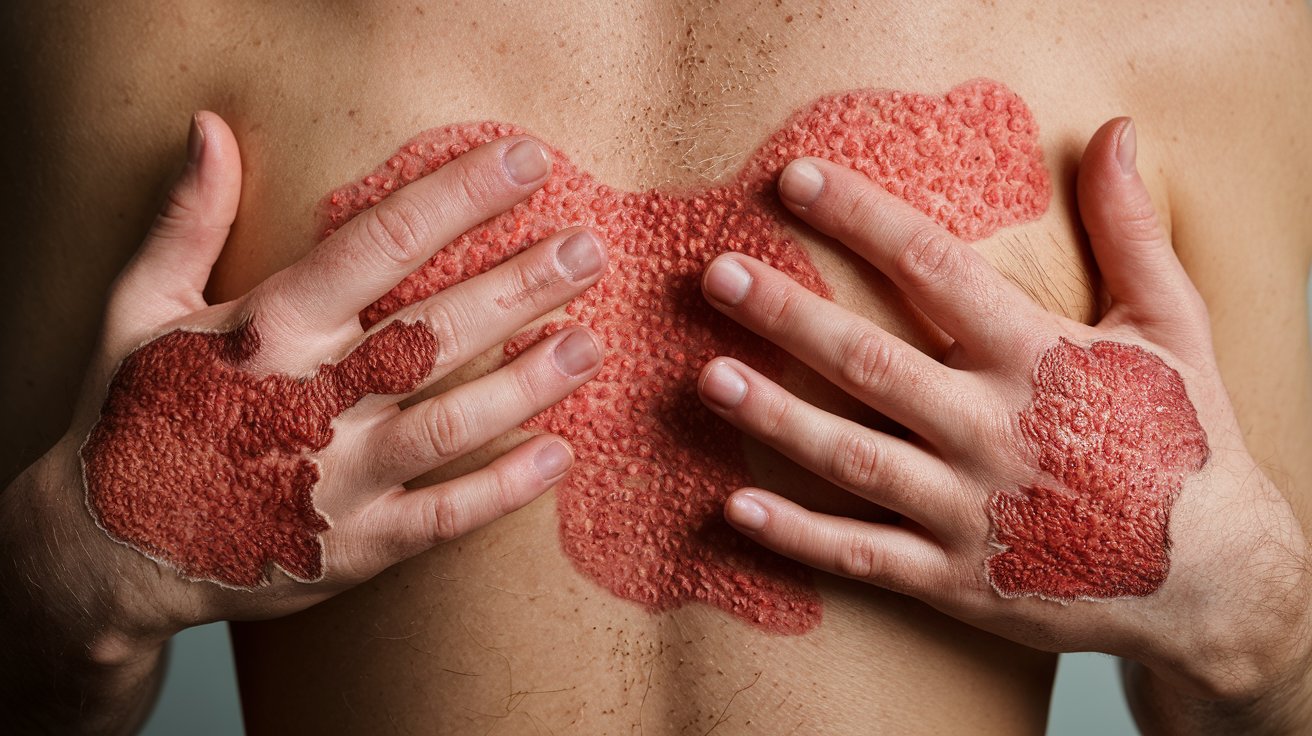
Dermochondrocorneal dystrophy might sound like a mouthful, but it's a rare condition that affects the skin, cartilage, and corneas. Ever wondered what makes this disorder so unique? Here are 30 facts that will help you understand it better. From its genetic roots to its impact on daily life, these facts will shed light on the mysteries of this condition. Whether you're a student, a curious mind, or someone affected by it, this list will provide valuable insights. Ready to dive into the world of dermochondrocorneal dystrophy? Let's get started and uncover the essentials you need to know!
Key Takeaways:
- Dermochondrocorneal Dystrophy (DCCD) is a rare genetic disorder affecting the skin, cartilage, and cornea. It causes thickened skin, joint pain, vision problems, and has no cure. Research is ongoing for potential treatments like gene therapy and stem cell research.
- DCCD is a rare genetic disorder that affects multiple tissues, causing thickened skin, joint pain, and vision problems. While there is no cure, treatments focus on managing symptoms, and ongoing research offers hope for future treatments.
What is Dermochondrocorneal Dystrophy?
Dermochondrocorneal Dystrophy (DCCD) is a rare genetic disorder affecting the skin, cartilage, and cornea. Understanding this condition can be challenging due to its complexity and rarity. Here are some intriguing facts about DCCD that shed light on its various aspects.
-
Rare Genetic Disorder: DCCD is extremely rare, with only a handful of documented cases worldwide.
-
Affects Multiple Tissues: This disorder impacts the skin, cartilage, and cornea, leading to a range of symptoms.
-
Genetic Mutation: DCCD is caused by mutations in specific genes responsible for collagen production.
-
Inherited Condition: It is typically inherited in an autosomal recessive manner, meaning both parents must carry the mutated gene.
-
Skin Symptoms: Individuals with DCCD often have thickened, leathery skin, particularly on the hands and feet.
-
Cartilage Issues: The disorder can cause cartilage abnormalities, leading to joint pain and stiffness.
-
Corneal Dystrophy: A hallmark of DCCD is corneal dystrophy, which can result in vision problems.
-
Early Onset: Symptoms usually appear in early childhood, although the severity can vary.
-
Diagnosis: Diagnosing DCCD involves genetic testing and clinical evaluation of symptoms.
-
No Cure: Currently, there is no cure for DCCD, but treatments focus on managing symptoms.
Symptoms and Diagnosis of DCCD
Understanding the symptoms and how DCCD is diagnosed can help in early detection and management. Here are some key points to consider.
-
Thickened Skin: Patients often develop hyperkeratosis, where the skin becomes abnormally thick.
-
Joint Pain: Cartilage abnormalities can lead to significant joint pain and mobility issues.
-
Vision Problems: Corneal dystrophy can cause blurred vision and sensitivity to light.
-
Hearing Loss: Some individuals may experience hearing loss due to cartilage issues in the ear.
-
Genetic Testing: Confirming DCCD typically requires genetic testing to identify specific mutations.
-
Biopsy: Skin and cartilage biopsies can help in diagnosing the condition by revealing characteristic tissue changes.
-
Eye Exams: Regular eye exams are crucial for detecting and managing corneal dystrophy.
-
Family History: A detailed family history can provide clues, as DCCD is inherited.
Treatment and Management of DCCD
While there is no cure for DCCD, various treatments can help manage the symptoms and improve quality of life.
-
Skin Care: Regular moisturizing and use of keratolytic agents can help manage thickened skin.
-
Pain Management: Pain relievers and physical therapy can alleviate joint pain and improve mobility.
-
Eye Care: Eye drops and other treatments can help manage corneal dystrophy and protect vision.
-
Hearing Aids: For those with hearing loss, hearing aids can improve communication and quality of life.
-
Surgery: In severe cases, surgical interventions may be necessary to correct joint or eye issues.
-
Genetic Counseling: Families affected by DCCD can benefit from genetic counseling to understand the risks and implications.
-
Support Groups: Joining support groups can provide emotional support and practical advice for managing the condition.
Research and Future Directions
Ongoing research is crucial for understanding DCCD better and developing new treatments. Here are some exciting developments in the field.
-
Gene Therapy: Researchers are exploring gene therapy as a potential treatment for genetic disorders like DCCD.
-
Stem Cell Research: Stem cell therapy holds promise for regenerating damaged tissues in conditions like DCCD.
-
Clinical Trials: Participating in clinical trials can provide access to new treatments and contribute to scientific knowledge.
-
Patient Registries: Establishing patient registries can help researchers gather data and identify patterns in DCCD.
-
Awareness Campaigns: Raising awareness about DCCD can lead to earlier diagnosis and better support for affected families.
The Final Word on Dermochondrocorneal Dystrophy
Dermochondrocorneal dystrophy, a rare genetic disorder, affects the skin, cartilage, and corneas. Understanding its symptoms, causes, and treatments can help those affected manage their condition better. Symptoms often include thickened skin, joint pain, and vision problems. Genetic mutations are the primary cause, and early diagnosis is crucial for effective management.
Treatment options vary, from medications to manage symptoms to surgical interventions for severe cases. Regular check-ups with healthcare professionals ensure timely adjustments to treatment plans. Support groups and resources can provide emotional and practical assistance.
Staying informed about the latest research and advancements in treatment can make a significant difference. Knowledge empowers patients and their families to make informed decisions about their health. Dermochondrocorneal dystrophy may be rare, but with the right information and support, those affected can lead fulfilling lives.
Frequently Asked Questions
Was this page helpful?
Our commitment to delivering trustworthy and engaging content is at the heart of what we do. Each fact on our site is contributed by real users like you, bringing a wealth of diverse insights and information. To ensure the highest standards of accuracy and reliability, our dedicated editors meticulously review each submission. This process guarantees that the facts we share are not only fascinating but also credible. Trust in our commitment to quality and authenticity as you explore and learn with us.


